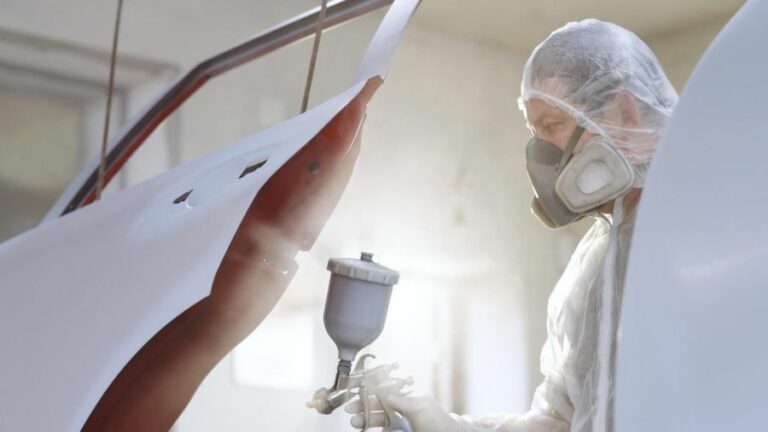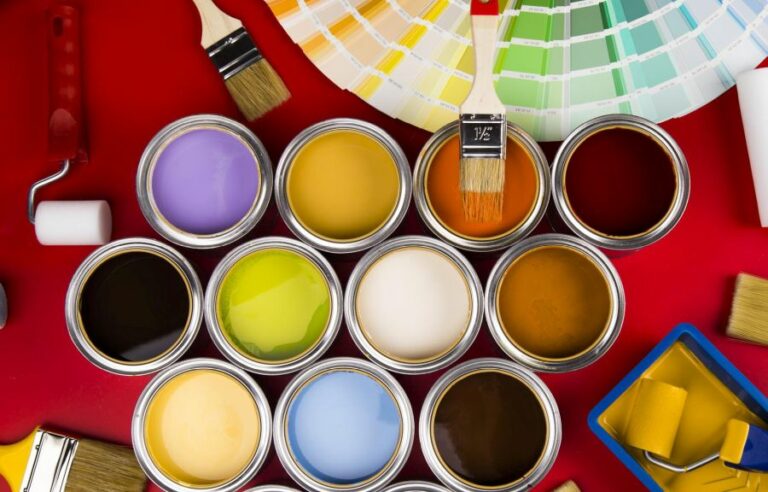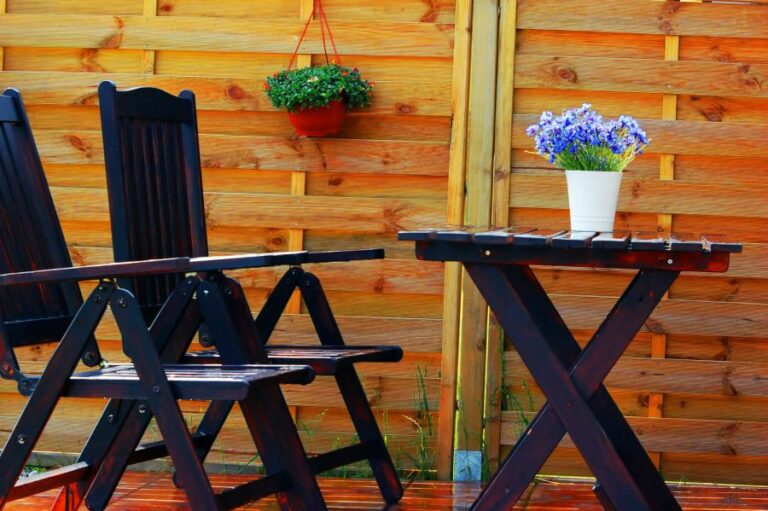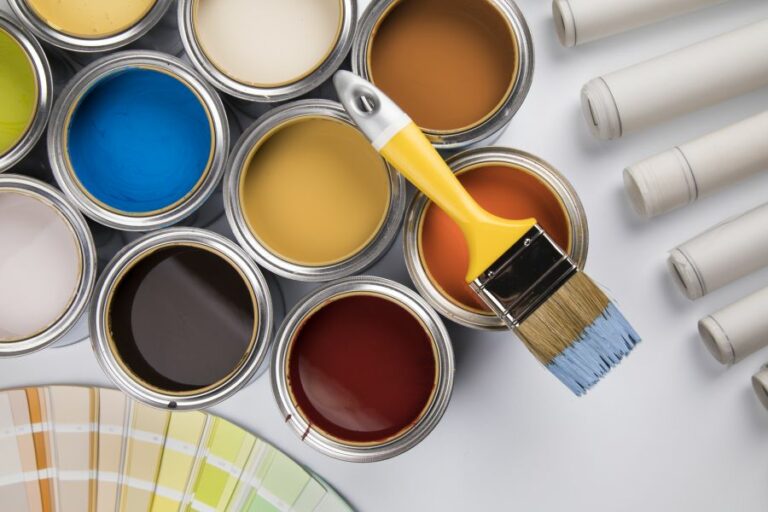Outdoor Weather-Resistant Acrylic Paint, 25 Things You Should Know
Are you tired of your outdoor furniture and decorations losing their vibrancy due to harsh weather conditions? I have the perfect solution to keep your exterior fresh and lively all year round. Outdoor weather-resistant acrylic paint is designed to withstand the test of time, providing lasting protection and eye-catching appeal for your outdoor pieces.
Outdoor weather-resistant acrylic paint:
Outdoor weather-resistant acrylic paint is a durable, versatile, long-lasting coating solution for exterior surfaces. It resists fading, chalking, cracking, and peeling, making it ideal for outdoor projects. This water-based and eco-friendly paint adheres well to multiple surfaces, dries quickly, and offers UV resistance, ensuring vibrancy and protection against harsh environmental conditions.

Discover the magic of outdoor weather-resistant acrylic paints, the ultimate solution to your outdoor painting projects. Uncover top brands, expert tips, and techniques to achieve vibrant, long-lasting colors. Read on and let your creativity run wild in the great outdoors!
Contents
- 1 Exterior Acrylic Paint with Weather Resistance
- 2 Is Acrylic Paint Suitable and Waterproof for Outdoor Use?
- 3 What materials can be applied over acrylic paint to ensure its protection when exposed to outdoor elements?
- 4 Is Acrylic Paint Suitable for Exterior Applications?
- 5 Identifying the Optimal Paint for Outdoor Art Projects
Exterior Acrylic Paint with Weather Resistance
• Introduction
When it comes to outdoor work or projects, finding the right paint is crucial. Outdoor weather-resistant acrylic paint is essential for many artists, DIY enthusiasts, and homeowners who need a durable and versatile coating solution for their exterior surfaces.
• What Is Outdoor Weather Resistant Acrylic Paint?
Outdoor weather-resistant acrylic paint is a type of paint specifically designed to withstand various environmental conditions while providing vibrancy, durability, and long-lasting quality.
It is formulated to resist fading, chalking, cracking, and peeling, making it an excellent choice for outdoor projects, including DIY ventures, public arts, or home exteriors.
This type of paint is typically water-based, making it more eco-friendly and easier to clean up than oil-based paints. It dries quickly and adheres well to a variety of surfaces, making it a popular option for various outdoor applications.
• Benefits of Using Weather Resistant Acrylic Paint
1. Long-lasting and Durable
One of the most significant benefits of outdoor weather-resistant acrylic paint is its ability to endure harsh weather conditions. It is formulated to resist fading, chalking, cracking, and peeling, ensuring long-lasting results for numerous projects.
2. Wide Range of Surfaces
Outdoor weather-resistant acrylic paint can be applied to various surfaces, including wood, metal, concrete, bricks, and plastic. This versatility makes it an ideal solution for homeowners or artists who need reliable paint for multiple substrates.
3. UV Resistance
Acrylic paints are known for their outstanding UV resistance, which protects the resulting artwork or project from fading due to prolonged sun exposure.
This is an essential factor to consider for outdoor paintings or DIY projects, as fading can significantly affect the visual appeal and quality of the finished work.
4. Water-based and Eco-friendly
Outdoor weather-resistant acrylic paint is water-based, making it less toxic and more environmentally friendly than oil-based paints. This also makes it easier to clean up any spills or brushes, usually requiring only soap and water instead of harsh chemicals.
5. Fast Drying Time
Acrylic paint dries very quickly compared to other types of paint, making it convenient for artists or do-it-yourselfers who need to complete their projects quickly. This also allows for layering and additional coats without having to wait for long periods.
• How to Choose the Right Outdoor Weather Resistant Acrylic Paint
When selecting outdoor weather-resistant acrylic paint for your project, there are a few essential factors to consider:
1. Surface Compatibility
Choose a paint that is compatible with the specific surface you are working on. Some paints are specially formulated to adhere to specific materials, so it’s essential to make sure the paint you select will bond correctly and provide long-lasting results.
2. Color Retention
Look for paint with excellent color retention to ensure that the final result will remain vibrant and fade-resistant for an extended period. This is particularly important for outdoor applications, where constant sun exposure can potentially cause fading and discoloration over time.
3. Coverage
Consider the paint’s coverage capabilities when selecting your product. Higher-quality paints usually provide better coverage and require fewer coats, making them more cost-effective and time-efficient in the long run.
4. Price
Paint prices can vary significantly, so consider your budget when making your choice. It is often worthwhile to invest in higher-quality paint for better performance and durability, but also look for discounts and deals to keep costs down.
• Application Tips and Techniques
To ensure the best results when using outdoor weather-resistant acrylic paint, follow these tips and techniques:
- Prepare the surface: Make sure the surface to be painted is clean and free of dirt, grease, and old paint. Sand or scrape the surface if needed for a smooth application.
- Priming: Using an appropriate primer can improve your paint’s adhesion and overall finish. Make sure to select a primer compatible with the specific surface you are working on.
- Use the right tools: Use high-quality brushes, rollers, or sprayers to ensure even coverage and a professional-looking finish.
- Work in the right conditions: The ideal temperature for painting outdoors with acrylic paint is between 50F and 85F, with low to moderate humidity. Avoid painting in direct sunlight or rainy conditions.
- Apply multiple coats: Depending on the paint’s coverage and the surface’s color or texture, you may need multiple coats for an even and vibrant finish.
• Final Thoughts
Outdoor weather-resistant acrylic paint is an excellent solution for various exterior projects, offering durability, versatility, and long-lasting vibrancy.
By selecting the right paint based on your project requirements and following proper application techniques, you can ensure your finished project looks professional and withstands the test of time.
To further expand your knowledge on outdoor weather-resistant acrylic paints, The National Center for Preservation Technology & Training offers valuable resources and guides that delve into outdoor paint characteristics and preservation methods.
Is Acrylic Paint Suitable and Waterproof for Outdoor Use?
Acrylic paint is a popular medium for both professional artists and hobbyists alike due to its versatility, wide range of colors, and ease of use. One of the most important questions when using acrylic paint is whether or not it is waterproof enough for outdoor projects.
• Understanding Acrylic Paints
Acrylic paint is a fast-drying, water-based paint that is made from pigment suspended in an acrylic polymer emulsion. Due to its water-soluble characteristics, acrylic paint dries quickly and adheres well to a variety of surfaces.
When properly applied, acrylic paint forms a strong, durable bond that resists peeling, cracking, and fading.
While acrylic paints have some level of water resistance when dry, they are not inherently waterproof. However, there are steps you can take to increase their durability and water resistance for outdoor use.
• Preparing the Surface for Acrylic Paint
Before applying any paint to an outdoor surface, it is essential to prepare the surface properly. Successful surface preparation removes dirt, dust, and any loose or peeling paint, ensuring that the paint adheres well and has a smooth finish. Surface preparation for outdoor projects may include:
- Thoroughly clean the surface with soap and water or a power washer, followed by sufficient drying time
- Sanding the surface to remove any loose or peeling paint and create a smooth, even texture
- Priming the surface, especially if painting over a dark color or a porous material, such as wood or concrete
Priming not only creates a consistent surface for the paint to adhere to but also helps to seal the surface, increasing the overall water resistance of the project.
• Choosing the Right Acrylic Paint for Outdoors
While all acrylic paints are water-based, they are not created equal. When selecting paints for outdoor projects, look for formulations specifically designed for outdoor use, often labeled as “exterior” or “outdoor” acrylic paint.
These paints typically contain higher levels of pigments and binders, providing better coverage, increased resistance to fading, and greater durability in outdoor conditions.
In addition to choosing paint formulated for outdoor use, it is essential to purchase paints from reputable brands with a track record of high-quality products. Higher-quality paints often have better pigmentation, adhesion, and durability, essential factors when using acrylic paints outdoors.
• Application Techniques for Outdoor Acrylic Paints
The method of applying acrylic paint can have a significant impact on the paint’s performance in outdoor conditions. Some tips for effective application include:
- Applying multiple thin coats of paint rather than a single thick coat, allowing each layer to dry thoroughly before adding the next
- Using a high-quality paintbrush or roller designed for acrylic paint to minimize brush marks and ensure a smooth, even finish
- Avoiding painting in extreme heat or cold, as these conditions can negatively impact the drying and curing process of the paint
For large outdoor projects, consider using a spray system to ensure even coverage and efficient application.
• Additional Protective Measures for Acrylic Paint Outdoors
To further increase the durability and water resistance of acrylic paint, it is recommended to seal the painted surface with a compatible clear sealer or varnish. Varied products are available that can provide a UV-resistant or waterproof finish, protecting the paint from damage due to outdoor exposure.
Some options for sealing acrylic paint outdoors include:
- Acrylic sealers: These clear coatings are specifically designed for use on acrylic paints and provide an extra layer of protection from the elements.
- Polyurethane: This type of sealer is available in water-based and oil-based varieties and can render a durable, waterproof finish when properly applied.
- Epoxy resin: Epoxy resin creates a hard, glossy surface that protects acrylic paint and can be used to create a waterproof barrier.
Before applying any sealer or varnish, ensure that the paint is fully dry, and follow the manufacturer’s directions for optimal results.
• Final Thoughts
While acrylic paint is not inherently waterproof, it can certainly be suitable for outdoor projects with proper application techniques, the correct choice of paint, and additional protective measures.
Remember to prepare and prime your surface before painting, choose a paint specifically designed for outdoor use, and seal your project with a compatible sealer or varnish for maximum durability and water resistance.
With a little extra care, your outdoor acrylic painting project can remain vibrant and beautiful for years to come.
Additional information on outdoor paint projects and sealants can be found on the United States Environmental Protection Agency’s website.
What materials can be applied over acrylic paint to ensure its protection when exposed to outdoor elements?
If you’re an artist who loves to create artwork for outdoor use, you may be wondering what you can apply over acrylic paint to protect it from the elements.
• Choosing a Protective Clear Sealer
One of the most common ways to protect your acrylic painting outdoors is to apply a clear protective sealer over the paint. These sealers come in different finishes, such as gloss, satin, or matte, to suit your desired final appearance.
– Varnish
Varnishes are popular choices because they work well with acrylic paints and are easy to apply. They are typically made from a combination of acrylic resin, solvents, and additives, all of which help create a durable and UV-resistant finish.
Varnishes can be brush-applied or spray-applied to your painted surface. I recommend using a high-quality varnish specifically designed for use with acrylic paints, such as Golden’s Archival Varnish or Liquitex Professional Varnish.
– Polyurethane
Polyurethane is another excellent choice for a protective coating. It forms a hard, durable, and UV-resistant shell that protects your paint from weathering, fading, and physical damage.
Polyurethane sealers come in both water-based and solvent-based versions, with water-based polyurethane being the more environmentally friendly option.
However, solvent-based polyurethane is generally more durable and long-lasting. Both types can be brush-applied or spray-applied. Some popular choices include Minwax Polycrylic (water-based) and Minwax Fast-Drying Polyurethane (solvent-based).
– Clear Acrylic Coatings
Clear acrylic coatings are aerosol spray products specifically designed for protecting artwork. They provide a clear, durable, and non-yellowing finish that is resistant to moisture, UV exposure, and scratches.
Some popular acrylic coating products include Krylon UV-Resistant Clear Coating and Golden Archival MSA Spray Varnish.
• Preparing Your Artwork for a Protective Coating
Before applying a protective coating to your outdoor acrylic painting, follow these essential steps:
– Properly Dry and Cure Your Acrylic Painting
Acrylic paints typically dry to the touch within minutes, but they need to cure for a more extended period to become fully resistant to water and UV rays. Allow your acrylic painting to cure for at least 48 hours, or as the paint manufacturer recommends, before applying a protective coating.
– Clean the Surface
Ensure that the surface of your painting is free of dust, dirt, and any other debris before applying a protective coating. Gently wipe the surface with a dry, lint-free cloth or soft brush.
– Test the Protective Coating on a Sample
Before applying a protective coating on your outdoor acrylic painting, test it on a small scrap piece of the same material with the same paint colors you used in your artwork. This will help you determine if you like the final appearance and ensure the product does not react adversely to your paint.
• Application Tips for Protective Coatings
Follow these best practices when applying a protective coating to your outdoor acrylic paintings to ensure a long-lasting and durable finish:
– Thin Layers and Multiple Coats
Applying thin, even layers of protective coating and allowing each layer to dry thoroughly before applying the next one will help prevent visible brush strokes, bubbles, and uneven coverage. Multiple thin coats will also result in a more robust and durable final finish.
– Protect Yourself and Your Workspace
When using aerosol spray products or solvent-based coatings, protect your health and your workspace by ensuring proper ventilation, wearing a mask and gloves, and covering nearby surfaces to prevent overspray and accidental spills.
– Humidity and Temperature Considerations
Protective coatings must be applied in suitable temperature and humidity conditions for optimal results. Always follow the product manufacturer’s guidelines regarding temperature and humidity levels.
• Periodic Maintenance for Outdoor Acrylic Art
Outdoor environments can be harsh and unforgiving, so it’s essential to inspect and maintain your outdoor acrylic art periodically. Check for any signs of fading, peeling, or damage that may require repair or reapplication of a protective coating.
Doing this will ensure that your outdoor masterpieces last for many years to come.
• Conclusion
In conclusion, protecting your outdoor acrylic paintings involves choosing a suitable protective clear sealer, preparing your artwork, and following best practices when applying the chosen coating.
By following these steps, your outdoor acrylic art will maintain its vibrancy while resisting the harmful effects of weather and sunlight, ensuring that your creations withstand the test of time.
For further information on acrylic paints and their use outdoors, consider visiting the Smithsonian Conservation Institute for a wealth of educational resources.
Is Acrylic Paint Suitable for Exterior Applications?
Acrylic paint is a versatile and durable option for many artists, DIYers, and homeowners. But when it comes to using this type of paint for exterior surfaces, not all are created equal.
• Differences Between Interior and Exterior Acrylic Paints
Before we dive into whether or not acrylic paint can be used for exterior surfaces, it’s important to understand the differences between interior and exterior paint. While both are acrylic-based, exterior paint often contains added ingredients that enhance its durability and resistance against the elements such as sunlight, rain, and temperature fluctuations. These additives may include UV blockers, mildewcides, and more flexible resins.
On the other hand, interior acrylic paint is specifically formulated for use within the boundaries of your home, and it may not hold up well outdoors.
• Advantages of Using Acrylic Paint for Exterior Surfaces
When applied properly, acrylic paint can offer several advantages when used for exterior projects. Some of these benefits include:
- UV Resistance: High-quality exterior acrylic paint contains additives that protect against harmful ultraviolet rays, which can cause paint to fade and break down over time.
- Moisture Resistance: Exterior acrylic paint is also formulated to resist moisture, preventing water damage and peeling.
- Flexibility: Acrylic paint remains flexible as it ages, allowing it to expand and contract with temperature changes, reducing the risk of cracking.
- Adhesion: Acrylic paint adheres well to a variety of surfaces, including wood, stucco, and concrete, making it a versatile choice for exterior applications.
- Environmentally Friendly: Many acrylic paints are low-VOC (volatile organic compounds) or VOC-free, meaning they release fewer harmful chemicals into the air and are better for the environment.
• Potential Disadvantages of Using Acrylic Paint Outdoors
Despite its numerous benefits, there are a few potential drawbacks when using acrylic paint for exterior projects:
- Cost: Exterior acrylic paint can be more expensive than other paint types, especially if it contains added benefits such as UV resistance and mildewcides.
- Surface Preparation: Acrylic paint may require more extensive surface preparation to ensure optimal adhesion, such as thorough cleaning, priming, and sometimes sanding or etching.
- Drying Time: Acrylic paint can take longer to dry compared to other options, potentially prolonging the overall project timeline.
• Tips for Selecting the Right Exterior Acrylic Paint
Considering the following factors can help you choose the right exterior acrylic paint for your project:
- Quality: Opt for high-quality paint from a reputable manufacturer. Cheaper or off-brand options may not provide the durability and protection necessary for exterior surfaces.
- Surface Compatibility: Check the paint label or consult with a paint expert to ensure the paint is compatible with the specific surface material you plan to apply it on (e.g., wood, stucco, or concrete).
- Coverage: Look for paint with good coverage capabilities, as this will ultimately affect the number of coats needed and the final appearance of the painted surface.
- Color Retention: Prioritize options with good color retention, as this will impact the longevity of the paint’s appearance over time.
• Application Tips for Exterior Acrylic Paint
Once you’ve chosen the right paint for your project, follow these guidelines to ensure a successful application:
- Surface Preparation: Clean and remove any dirt, debris, or loose paint. If necessary, sand the rough surfaces and apply an appropriate primer.
- Weather Conditions: Paint when the temperature is between 50-85°F (10-29°C), and avoid painting in direct sunlight or high humidity.
- Apply Thin Coats: Applying multiple thin coats ensures even coverage and allows the paint to dry more quickly and adhere properly.
- Follow Drying Times: Allow each coat to dry according to the manufacturer’s recommendations before applying subsequent coats.
You may also wish to consult the American Coatings Association for additional information on using paint in various environments and applications.
In conclusion, acrylic paint can be an excellent option for exterior surfaces when you choose a high-quality, exterior-grade product and follow the proper application guidelines.
Its durability, UV resistance, and versatile performance on various surface types make it a popular choice among professionals and homeowners alike.
Identifying the Optimal Paint for Outdoor Art Projects
Outdoor art projects can be a fantastic way to beautify our surroundings, express our creativity, and engage with our community. However, selecting the right type of paint can determine the success and longevity of these projects.
Thankfully, there are many suitable options available that cater to various surfaces, weather conditions, and artistic styles.
• Acrylic Paints: A Versatile and Long-Lasting Choice
One of the most popular paint types for outdoor art projects is acrylic. These water-based paints are known for their durability, versatility, and ease of use. They come in various finishes, such as matte, satin, and gloss, providing a wide range of possibilities for your artwork.
The water-resistant nature of acrylic paints makes them an excellent choice for outdoor applications. They can withstand various weather conditions and are less likely to fade, crack, or peel due to UV exposure.
Furthermore, acrylic paints are non-toxic and environmentally friendly, making them a safe option for use in public spaces.
For maximum longevity and protection, it is recommended to apply a clear UV-protective varnish or sealant over the completed artwork. This additional layer helps protect the paint from moisture, dirt, and UV damage, ensuring your outdoor masterpiece remains vibrant for years to come.
The University of Maryland Extension provides more information on the advantages of acrylic paints for outdoor applications.
• Exterior House Paints: Designed for the Outdoors
Exterior house paints are another excellent option for outdoor art projects, particularly if you are working on a large scale or painting on surfaces like brick, concrete, or stucco. These paints are specifically designed for outdoor use, offering exceptional durability and resistance to weathering.
Exterior house paints come in various finishes, including flat, satin, and gloss, allowing you to customize the appearance of your artwork. They also contain UV-protective additives that help prevent fading and discoloration due to sun exposure.
When using exterior house paints, it is essential to properly prepare the surface by cleaning and priming it as needed. This will help ensure proper paint adhesion and extend the lifespan of your artwork.
• Spray Paints: Fast and Efficient Coverage
For quick and efficient coverage, spray paints can be a convenient option for outdoor art projects. There is a wide range of outdoor-specific spray paints available, offering vibrant colors and durable finishes to bring your artwork to life.
While not as environmentally friendly as acrylic or exterior house paints, spray paints have their advantages. They offer a more even and rapid application, making them ideal for covering large areas or creating intricate patterns and designs.
Additionally, many spray paints have built-in UV protection and weather resistance, ensuring your outdoor art remains vibrant and long-lasting.
To achieve the best results with spray paint, make sure to follow the manufacturer’s instructions for surface preparation, application, and drying times. And do not forget to use proper safety precautions, such as wearing a mask and gloves, when working with spray paints.
• Mural Paints: For Large-Scale Artworks
Mural paints are specially formulated for large-scale outdoor art projects, often used by professional artists and muralists. They offer excellent durability, UV resistance, and a wide range of colors to ensure your artwork lasts for years to come.
Mural paints are typically acrylic-based, offering many of the same benefits as traditional acrylic paints. However, they may also contain unique additives and binders designed for optimal performance on surfaces such as brick, concrete, and stucco.
While mural paints can be more expensive than other paint types, investing in a high-quality product can ensure the longevity of your outdoor artwork.
• Tips for a Successful Outdoor Art Project
No matter the paint type you choose, proper surface preparation and application techniques are essential to achieve a long-lasting and visually striking outdoor art project. Some general tips for success include:
- Clean and prime the surface as needed to ensure proper paint adhesion.
- Choose a high-quality paint with UV protection and weather resistance.
- Apply multiple thin layers of paint, allowing each layer to dry fully before adding the next.
- Wear appropriate safety gear, such as gloves and masks, when working with paints or chemicals.
- Seal your completed artwork with a clear, UV-protective varnish or sealant.
With the right paint type and attention to detail, your outdoor art project can become a stunning and enduring addition to your community.
Paint Type | Pros | Cons |
|---|---|---|
Acrylic Paint | Water-based, versatile, fast-drying, available in a wide range of colors | Can fade over time, may not adhere well to certain surfaces, may require a sealant to protect from weather |
Outdoor Spray Paint | Easy application, quick-drying, adheres well to a variety of surfaces | Limited color options, can be toxic if inhaled, may require a sealant to protect from weather |
Oil-based Paint | Durable, long-lasting, resistant to damage from weather, greater depth of color | Longer drying time, fewer color options, more difficult to clean up, requires solvents for thinning and cleaning |
Masonry Paint | Designed specifically for use on concrete, stone, and masonry surfaces, very durable | Limited color options, less versatile for other surfaces |







